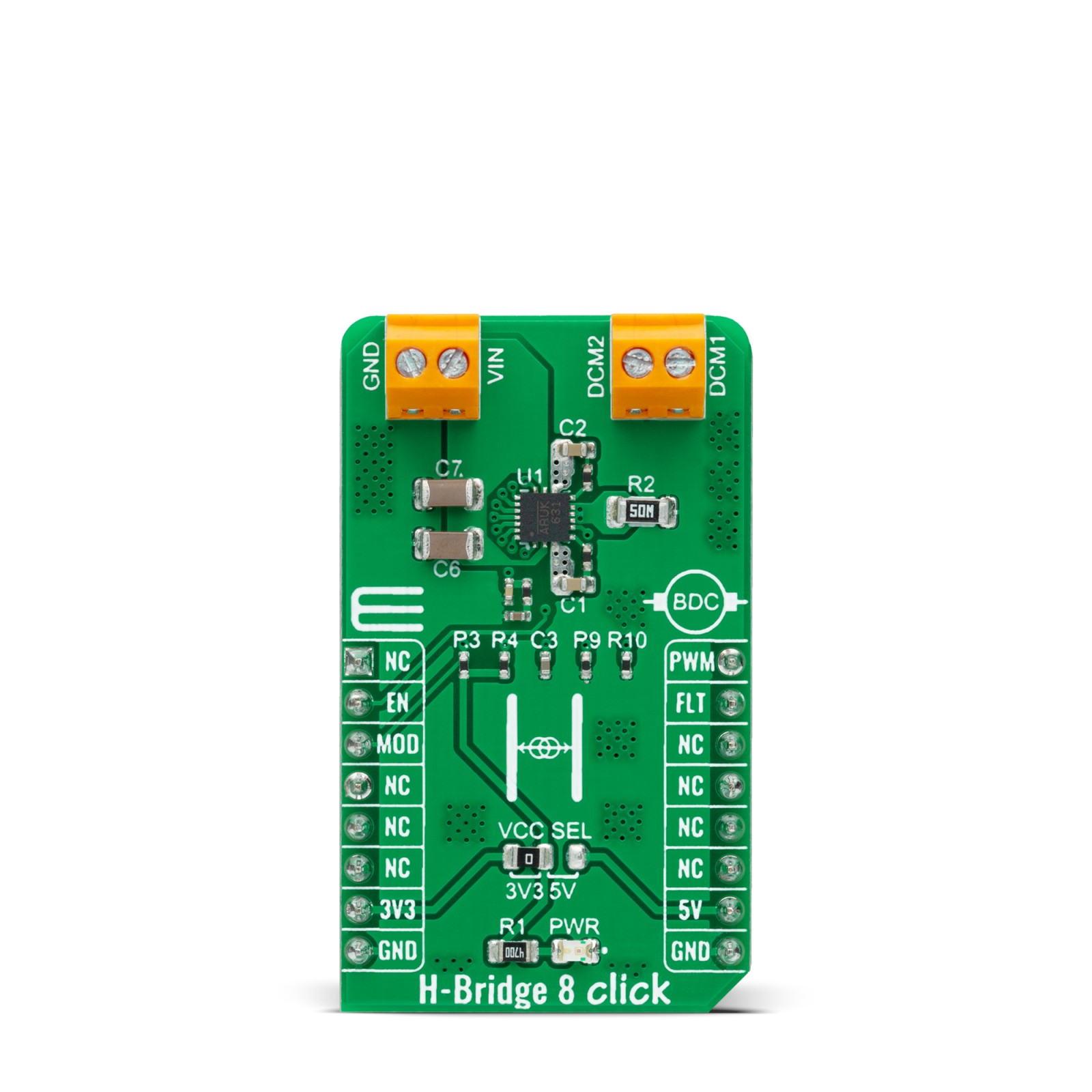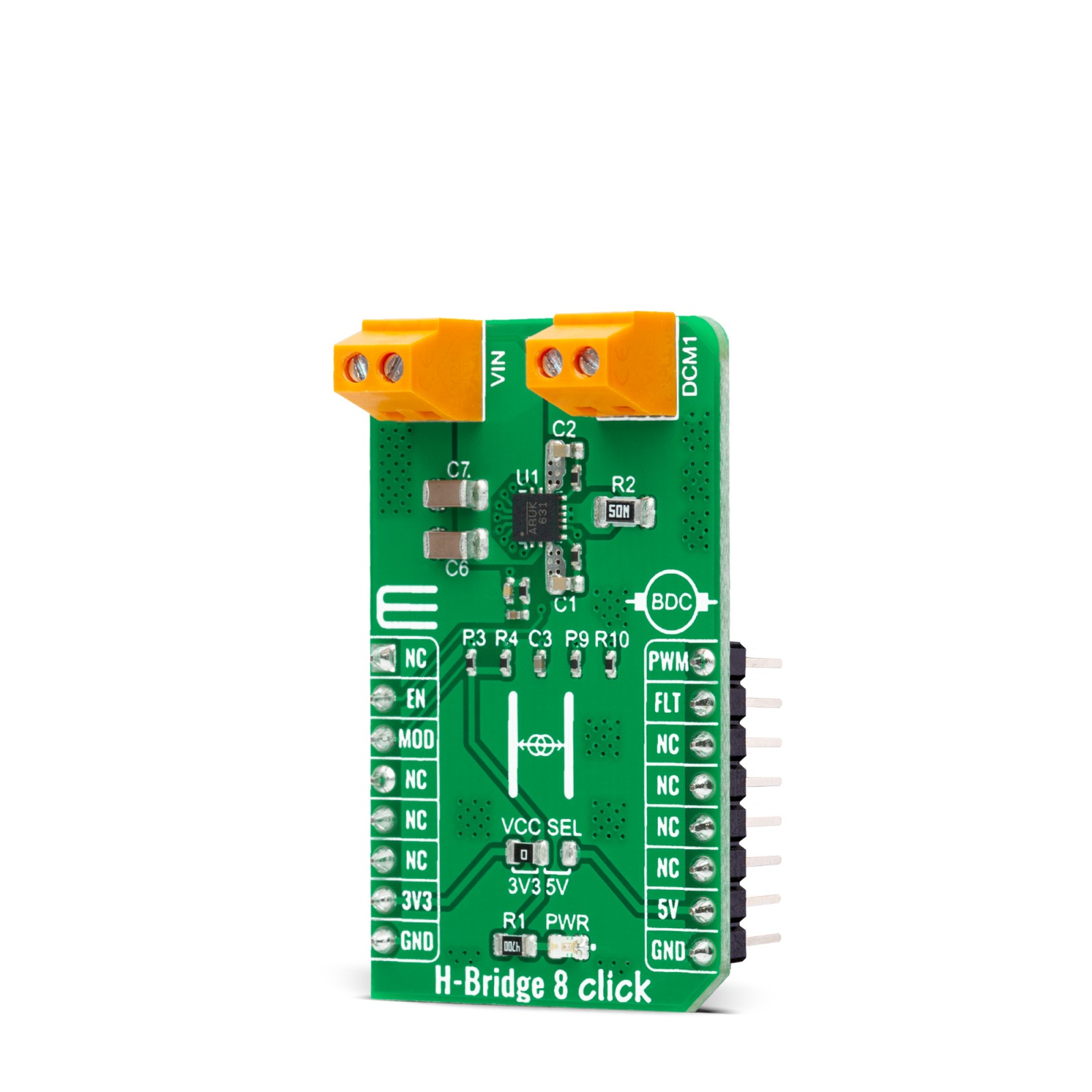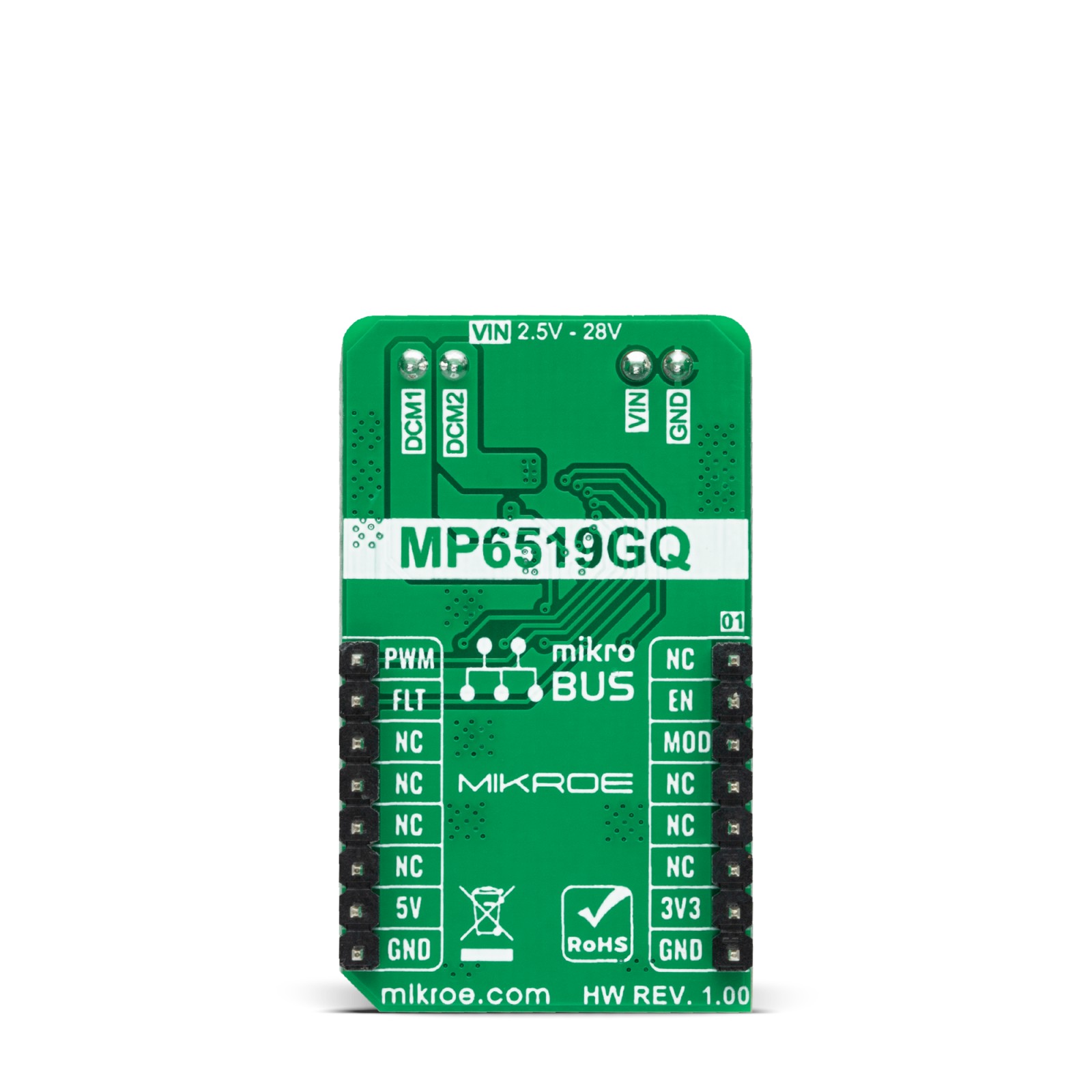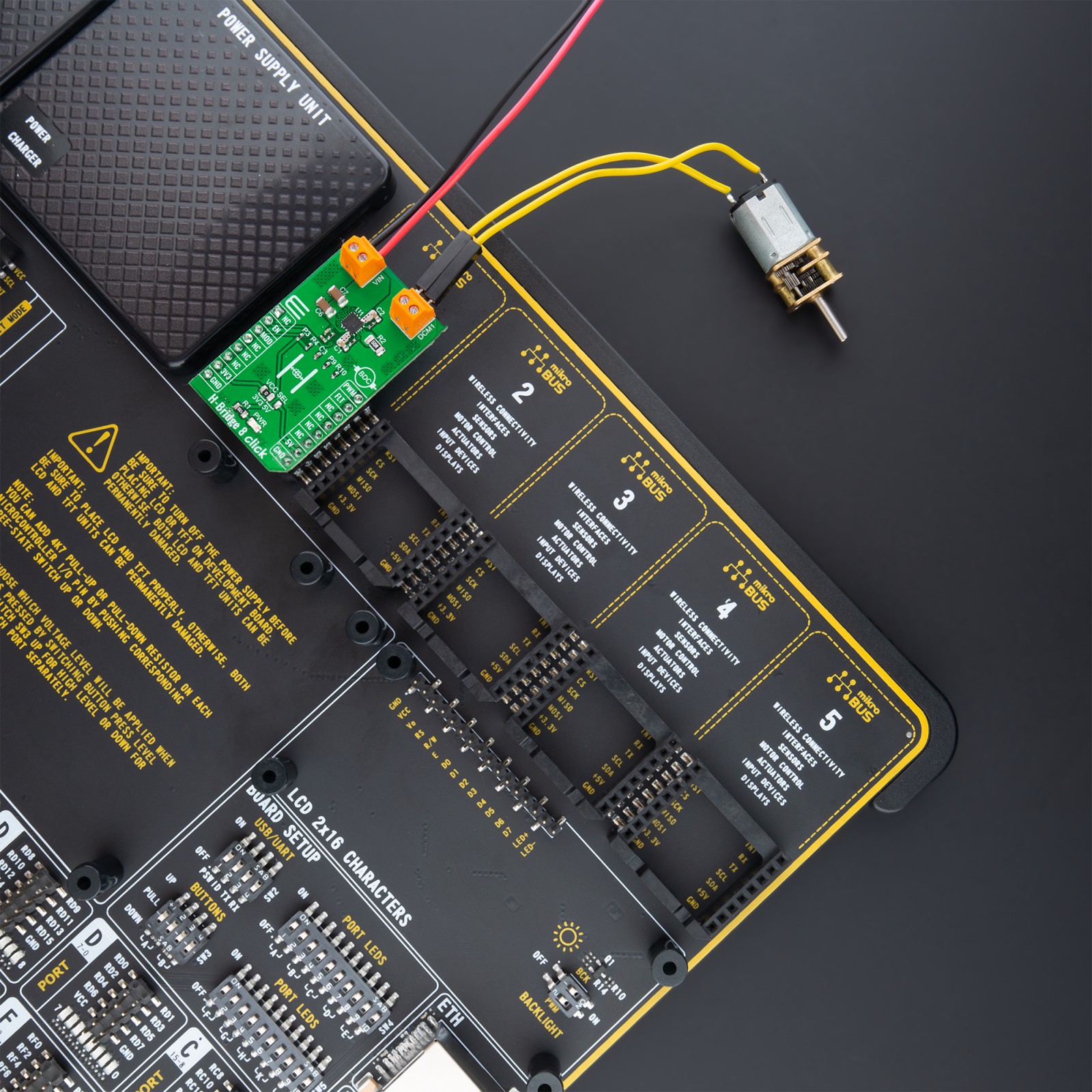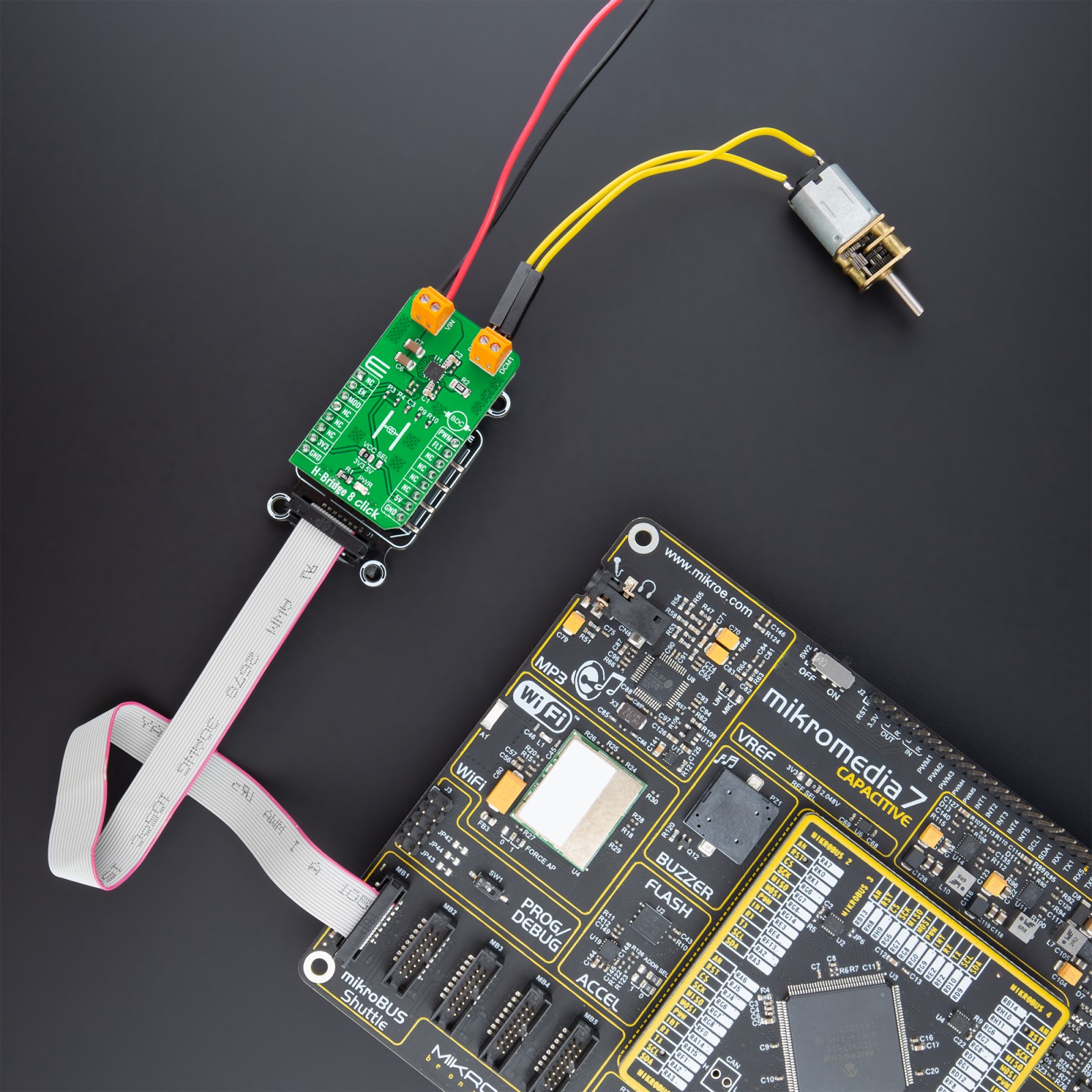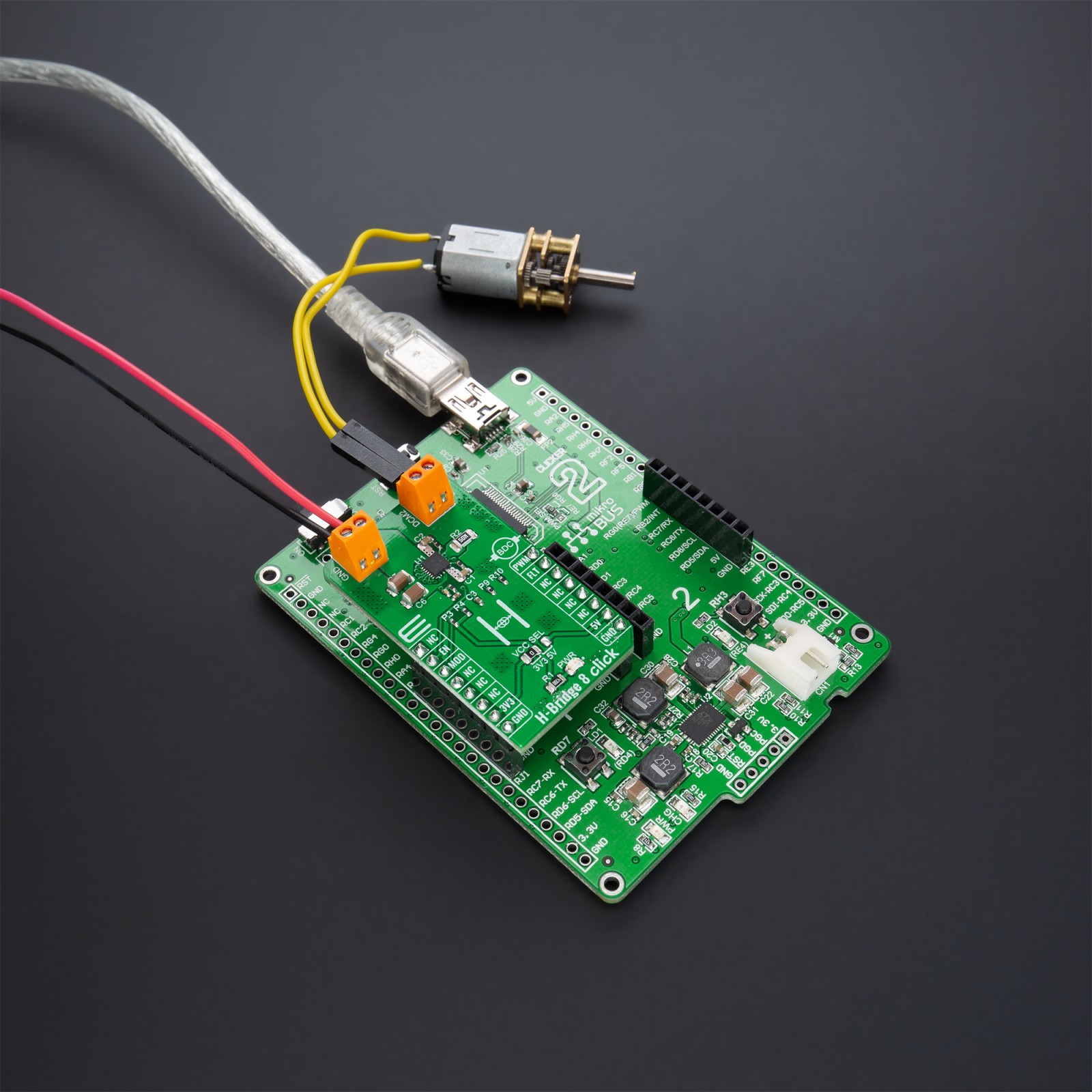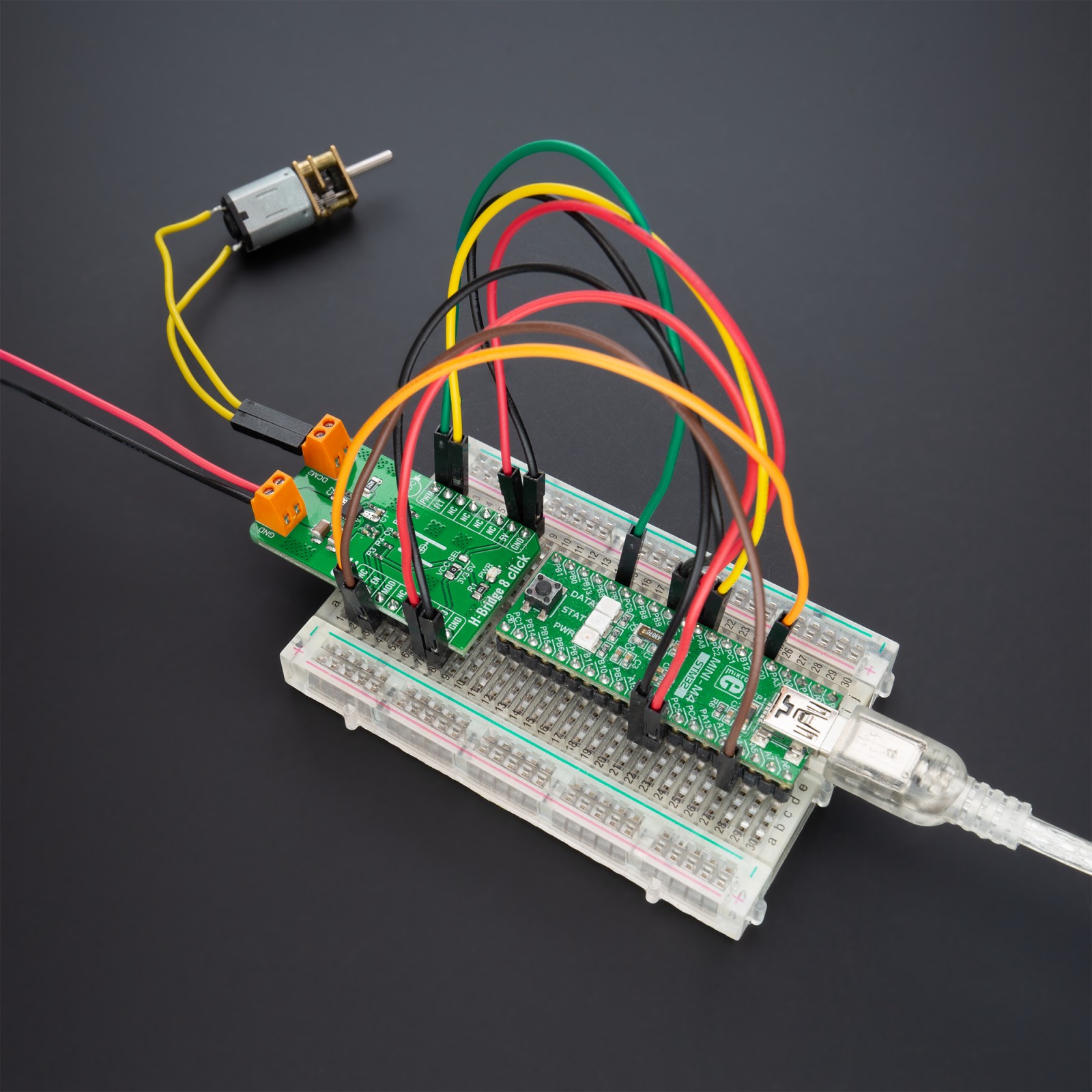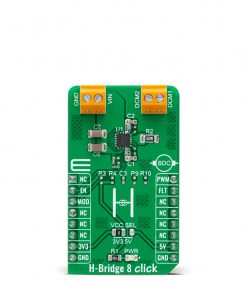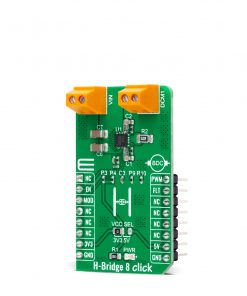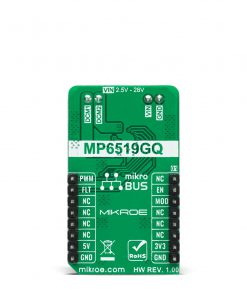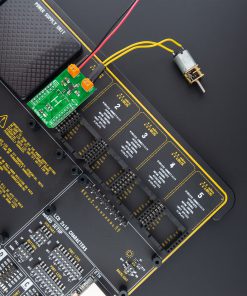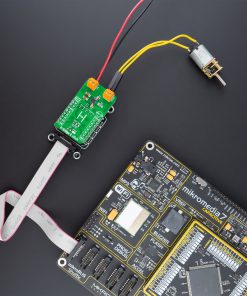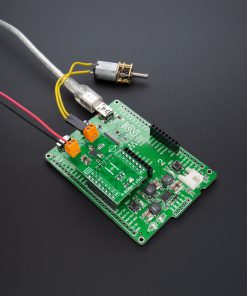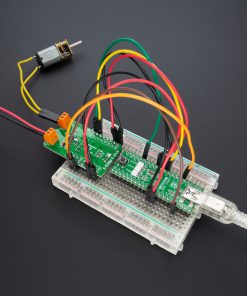H-Bridge 8 Click
R330.00 ex. VAT
H-Bridge 8 Click is a compact add-on board that contains H-bridge current regulator. This board features the MP6519, a monolithic, step-down, current-source driver for applications that require accurate and fast current-response control from Monolithic Power Systems (MPS). It achieves excellent load and line regulation over a wide input supply range up to 28V. The four integrated MOSFET H-bridge control provide a fast dynamic load response and an ultra-high efficiency solution. Complete protection features include load open, load-short protection, over-current protection (OCP), over-temperature protection (OTP), and input over-voltage protection (OVP). This Click board™ is suitable as a current-regulator brushed DC motor/solenoid driver for various applications.
H-Bridge 8 Click is supported by a mikroSDK compliant library, which includes functions that simplify software development. This Click board™ comes as a fully tested product, ready to be used on a system equipped with the mikroBUS™ socket.
Stock: Lead-time applicable.
| 5+ | R313.50 |
| 10+ | R297.00 |
| 15+ | R280.50 |
| 20+ | R269.94 |

